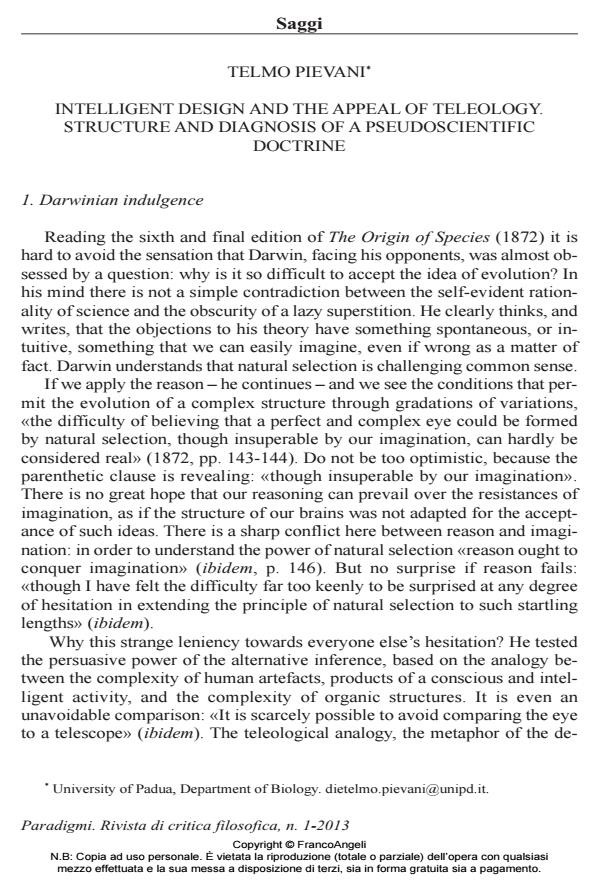Intelligent Design and the Appeal of Teleology. Structure and Diagnosis of a Pseudoscientific Doctrine
Journal title PARADIGMI
Author/s Telmo Pievani
Publishing Year 2013 Issue 2013/1
Language Italian Pages 14 P. 151-164 File size 172 KB
DOI 10.3280/PARA2013-001010
DOI is like a bar code for intellectual property: to have more infomation
click here
Below, you can see the article first page
If you want to buy this article in PDF format, you can do it, following the instructions to buy download credits

FrancoAngeli is member of Publishers International Linking Association, Inc (PILA), a not-for-profit association which run the CrossRef service enabling links to and from online scholarly content.
A cognitive study of "Intelligent Design" (ID) arguments shows that they are carefully suited for our minds attracted by teleological beliefs - as already argued by Darwin - and by the over-detection of intentionality and finalism in the external world. We describe how the epistemic structure of ID doctrine is consciously shaped by this cognitive appeal for our minds "born to believe", then implemented by a strong familiarity with the rules (sometimes misleading) of current public debates and communication. A four stage procedure of epistemological evaluation of this kind of pseudoscience, based on a "benefit of doubt" methodology, is then outlined.
Keywords: Intelligent Design, Teleological reasoning, Cognitive appeal, Uniqueness of evolutionary biology, Epistemological pluralism.
- Geoethics Telmo Pievani, pp.57 (ISBN:9780127999357)
Telmo Pievani, Intelligent design and the appeal of teleology. structure and diagnosis of a pseudoscientific doctrine in "PARADIGMI" 1/2013, pp 151-164, DOI: 10.3280/PARA2013-001010